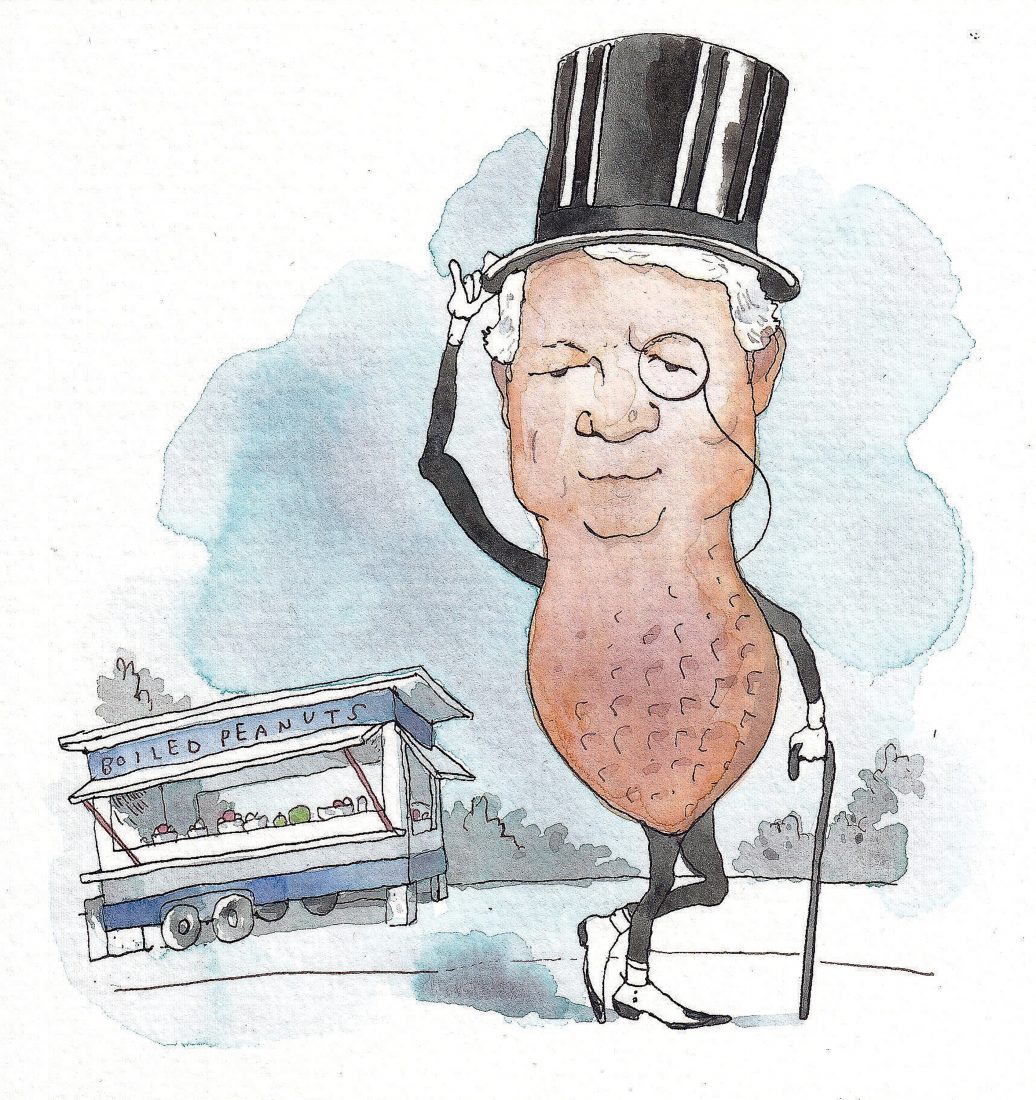When it comes to healthful eating, I take a positive approach. When I hear that something I like is good for me or anyway better than something else (for instance, that Velveeta has more protein and fewer bad fats than some real cheese, because it is largely whey), I say, “Hey! Let us see if we have some in the pantry.” When I hear that something I like is not so good (for instance, that Velveeta is rich in sodium), I say, “Let us not rush to judgment.”
And we live in a very positive time right now. It may not last (remember when bread was the staff of life?), but lately I have heard good things, from authorities recognized by my wife, about watermelon, avocado, egg yolk, cane syrup, okra, lard, oysters, beef (if raised right), whiskey, chocolate, butter!
Butter! Not margarine, no, ptui, and not any of your quasi-buttery “spreads,” but actual, cow-given butter.
Truer words were never uttered:
Anything good is better buttered.
And now, at last, the new health food: boiled peanuts.
I know, I was surprised myself. Boiled peanuts may be the murkiest Southern delicacy. People who didn’t grow up with boiled peanuts see them simmering in that dark brine in that black pot tended by that sad-eyed man on the side of the road, and the voice of reason whispers, “What kind of people boil nuts?” The esteemed Serbian-American poet Charles Simic is one to toss exotic elements into his stew: “a beer-bottle full of blood,” and “tongues with bones in them, / Bones of a wolf gnawed by lambs.” In a dispatch from the South to the New York Review of Books Simic said some nice things: “It’s not a cliché that people are courteous in the South. Many of them tell memorable stories, love words, and can make something unexpected out of the simplest verbal ingredients.” But one Southern ingredient defied his imagination: “The roadside fruit stands were overflowing with baskets of ripe peaches, tomatoes, and watermelons. There was also something called ‘boiled peanuts,’ which I was wary to try.”
Simic had evidently not read “Changes in the Phytochemical Composition and Profile of Raw, Boiled, and Roasted Peanuts” in the American Chemical Society’s Journal of Agricultural and Food Chemistry, which reported that boiled peanuts have fewer calories and less fat, a higher percentage of good fat, more fiber, and up to four times more antioxidants (which are good for your heart) than raw or oil- or dry-roasted ones. Boiling in salty water draws vitamins and flavonoids, not to mention fun-to-pronounce polyphenolic compounds, from the peanut’s shell and skin.
Now, eating primarily for health is like marrying for money. In other words, it’s not entirely crazy, but unless a meal or a relationship commences with yum, I don’t see it going anywhere. Fortunately, boiled peanuts are luscious. Online you can find recipes for boiled-peanut hummus and boiled-peanut beurre blanc, but I don’t know why in the world you would want to. Half the experience of boiled peanuts is in how you eat them.
Over the sink is not a bad idea; at any rate you’ll want to have a dishrag handy, because boiled peanuts are juicy. (Peanuts aren’t nuts, by the way, they’re legumes. Boiled ones have aptly been called redneck edamame.) One approach is laid out on, yes, YouTube (how did we survive as a people before it?) by Sarah Pope, the Healthy Home Economist: “First of all, you take the peanut, put the whole thing in your mouth. Then you bite it, suck out the juice, then you take it out of your mouth, and open it up, and eat the peanuts. That’s the correct way. If you eat it any other way, people are going to know you don’t know how to eat boiled peanuts.”
I am less prescriptive. For as we know, there are boiled peanuts, and then there are boiled peanuts. Some of them are still a little crunchy, and some of them are, okay, mush. Some of them have a soft lining of the shell, which I like to call the polyphenolic layer. Others partially adhere to the shell so you have to gnaw them out with either your upper teeth or your lowers, or you may want to use a fingernail. There are little single-unit ones that you’ll eat hullistically (heh heh I mean hull and all), but otherwise I think you’ll want to open up your boiled peanut and look at it, see whether you’re getting a nutty one or a peasy one, before you slurp it. Do you lose some of the juice that way? Not really; you get it all over yourself. Another sign of a lasting relationship.








